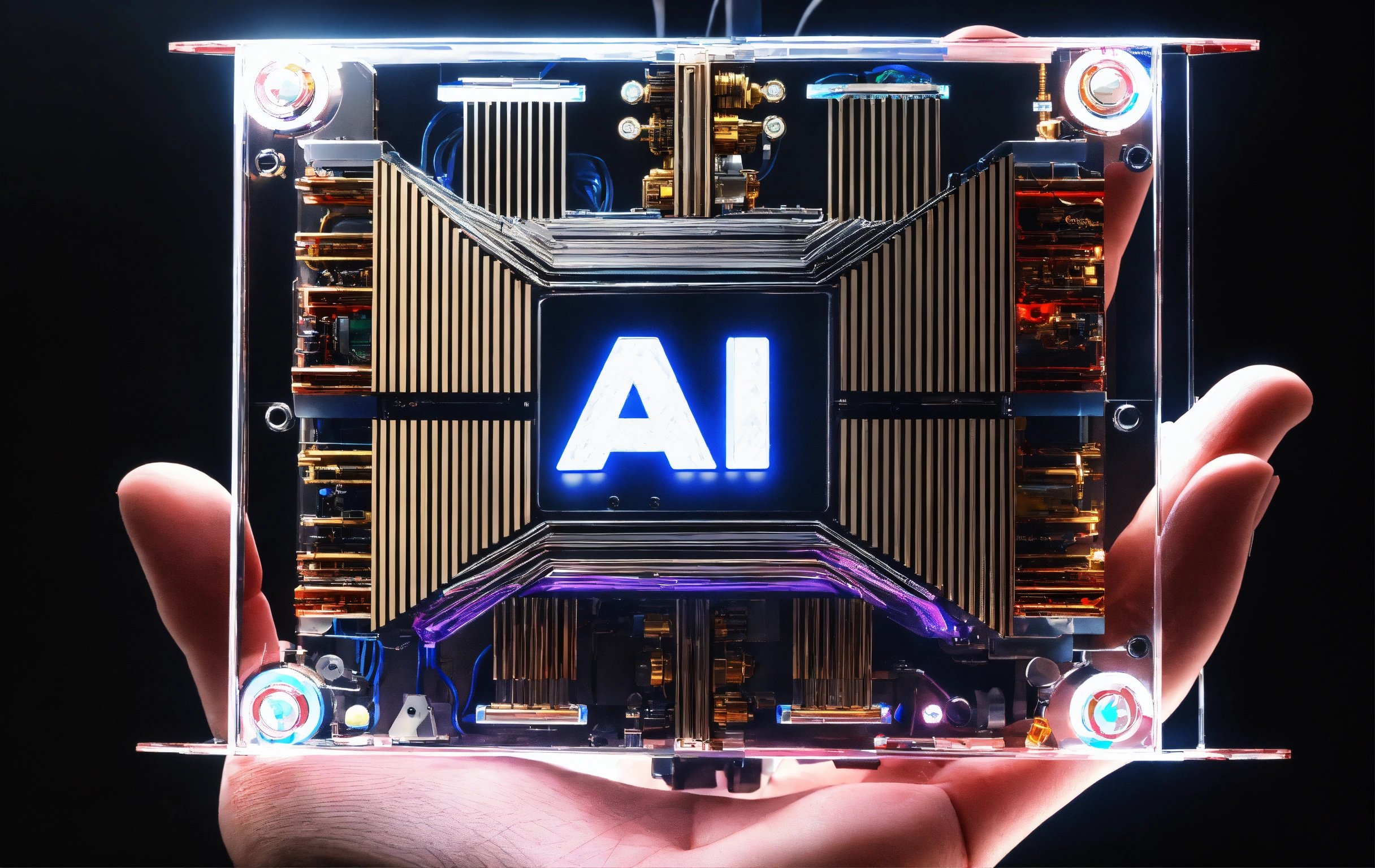Artificial intelligence is the discipline dedicated to developing computer systems or software that can carry out tasks usually done by human intelligence.
This includes activities such as learning, reasoning, problem-solving, perception, and language understanding. AI algorithms analyze vast amounts of data, recognize patterns, and make decisions with minimal human intervention.
Types of Artificial Intelligence:
AI can be divided into two primary categories:
Narrow or weak AI: Narrow AI is specifically designed to carry out particular tasks or address specific problems within a confined domain. Examples include virtual assistants like Siri and Alexa, image recognition systems, and recommendation algorithms used by streaming platforms and e-commerce websites..
General or Strong AI: General AI pertains to a theoretical AI system with the capacity to comprehend, learn, and apply knowledge across a broad spectrum of tasks and domains, akin to human intelligence. General AI would possess the ability to engage in reasoning, problem-solving, creativity, and adaptation in various scenarios. Nevertheless, genuine general AI has not been achieved yet and remains a topic of research and speculation.
Subfields of AI:
1. Machine learning: a component of AI that concentrates on empowering computers to learn from data and enhance performance without explicit programming. Subfields within ML include:
supervised learning
Unsupervised learning
Reinforcement learning
2. Deep learning (DL) is a subset of machine learning that focuses on artificial neural networks with multiple layers (deep neural networks). It’s particularly powerful for tasks like image and speech recognition, natural language processing, and autonomous driving.
3. Natural Language Processing (NLP): The AI domain that deals with enabling computers to comprehend, interpret, and generate human language. NLP techniques are utilized in applications such as language translation, sentiment analysis, and chatbots.
4. Computer Vision: The AI branch that focuses on enabling computers to comprehend and interpret visual information from the real world, like images and videos. Computer vision is applied in tasks like object recognition, facial recognition, and medical image analysis.
5. Robotics: The convergence of AI, engineering, and computer science that centers on creating, constructing, and programming robots capable of autonomous operation and interaction with their surroundings.
Methodologies in Artificial Intelligence:
Methodologies in AI are given below:
1. Supervised Learning:
Supervised learning involves training a model on labeled data, where the input-output pairs are provided. The model learns to map inputs to outputs based on the given examples.
2. Unsupervised Learning:
Unsupervised learning involves training a model on unlabeled data, where the model learns patterns and structures in the data without explicit guidance. Clustering and dimensionality reduction are common tasks in unsupervised learning.
3. Reinforcement Learning:
Reinforcement learning involves training agents to make sequential decisions in an environment to maximize cumulative rewards. Agents learn through trial and error, receiving feedback in the form of rewards or penalties.
4. Transfer learning:
Similarly, transfer learning involves leveraging knowledge or representations learned from one task or domain to improve performance on another related task or domain. It enables faster learning and better generalization in new domains with limited data.
5. Neural Network Architectures:
Furthermore, various neural network architectures, such as convolutional neural networks (CNNs), recurrent neural networks (RNNs), and transformers, are used depending on the nature of the input data and the task at hand.
ADVANTAGES OF AI:
1. Streamlining Operations: AI technology streamlines operations by automating repetitive tasks, allowing human workers to dedicate their time and skills to more intricate and imaginative endeavors. This results in heightened productivity and efficiency across various industries.
2. Enhanced Precision and Efficiency: AI systems possess the capability to swiftly and accurately process vast amounts of data, leading to improved decision-making and reduced errors. So, it proved to be particularly advantageous in various sectors like healthcare, finance, and manufacturing.
3. Tailored Experiences: AI-powered systems have the ability to analyze individual preferences, behaviors, and patterns in order to deliver personalized experiences and recommendations. Streaming platforms, e-commerce websites, and social media platforms utilize recommendation systems, making this evident.
4. Insightful Predictions: AI algorithms can analyze historical data to identify trends, patterns, and insights that may go unnoticed by humans. This empowers organizations to make data-driven predictions and forecasts, thereby enhancing planning and strategy formulation.
5. Uninterrupted Availability: AI-powered systems can operate continuously without experiencing fatigue, ensuring round-the-clock services and support. Virtual assistants, chatbots, and automated customer service exemplify AI applications that offer constant availability.
Another Most Important Benefit:
- Cost-Effective Measures
- Revolutionary Problem-Solving: .
- Improved Safety and Security:
- Support in Healthcare
- Positive Environmental Influence
Disadvantage of AI:
- Drawback
- Costly.
- Necessitates extensive technical knowledge.
- Scarcity of skilled workers to develop AI tools.
- Amplifies the biases present in its training data, on a large scale.
- Inability to transfer knowledge from one task to another.
- Results in job losses for humans, leading to higher rates of unemployment.
Application of Artificial Intelligence:

Application of Artificial Intelligence:
- Healthcare
- Finance:
- Retail:
- Automotive:
- Manufacturers
- Customer Service:
- Education:
- Cybersecurity:
- Natural Language Processing (NLP)
- Environmental Monitoring
- Social media.
Application’s Detail:
Here are some common applications:
- Healthcare: The medical field uses AI for medical image analysis, diagnosis assistance, personalized treatment plans, drug discovery, and patient monitoring. It helps in detecting diseases earlier, predicting patient outcomes, and optimizing healthcare operations.
- Finance: In finance, companies use AI algorithms for fraud detection, algorithmic trading, risk assessment, credit scoring, and customer service. AI enables better decision-making by analyzing large volumes of financial data in real-time.
- Retail: It helps retailers improve the customer experience, optimize pricing strategies, and streamline supply chain operations.
- Automotive: AI powers self-driving cars by enabling perception, decision-making, and navigation based on real-time data from sensors. Furthermore, it also enhances vehicle safety, predictive maintenance, and smart traffic management systems.
- Manufacturers use AI for predictive maintenance, quality control, supply chain optimization, and autonomous robots in manufacturing processes. It enables efficient resource utilization, reduces downtime, and improves product quality.
- Customer Service: AI-powered chatbots and virtual assistants handle customer inquiries, provide personalized recommendations, and automate routine tasks. They offer 24/7 support, enhance customer satisfaction, and reduce operational costs.
- Education: AI assists in personalized learning experiences, adaptive tutoring, automated grading, and student performance analysis. It tailors educational content to individual needs, facilitates remote learning, and provides insights for educators.
- Cybersecurity: AI algorithms detect and respond to cybersecurity threats by analyzing patterns in network traffic, identifying anomalies, and predicting potential breaches. They help in real-time threat detection, risk assessment, and proactive defense mechanisms.
- Natural Language Processing (NLP): NLP techniques enable sentiment analysis, language translation, text summarization, and virtual assistants like chatbots.
- Social media: Artificial intelligence plays a key role in facial recognition and verification, besides being used in designing social media algorithms.
Benefits of AI:

Advantages of AI in social media
- Increased Efficiency
- Reduced cost
- Improved Customer Engagement
- Enhanced Customer Satisfaction
- Increased Revenue
Artificial intelligence (AI) differs from human intelligence in several key aspects.
1.AI is constructed by humans and functions based on algorithms and programming, whereas human intelligence is inherent and encompasses cognitive abilities such as learning, reasoning, perception, and emotional understanding
2. Learning methods also distinguish AI from human intelligence. AI learns from data using algorithms and statistical techniques, on the other hand, human learning involves a combination of personal experience, education, intuition, and social interaction.
3. Another differentiating factor is flexibility. AI is usually designed for specific tasks or domains, potentially lacking the adaptability and versatility inherent in human intelligence. Humans can adeptly apply knowledge and skills across various situations and contexts.
Moreover, creativity is an area where AI and human intelligence diverge. While AI can produce new solutions or outputs based on existing data and rules, human creativity involves imagination, intuition, and abstract thinking, enabling the generation of original ideas and innovations.
5. Emotion and empathy are key components of human intelligence, contrasting with AI which lacks these features. Human intelligence encompasses emotional intelligence, empathy, and social awareness, allowing individuals to comprehend and empathize with the emotions of others.
6. Ethical and moral reasoning distinguish human intelligence from AI because, humans can engage in ethical and moral reasoning based on values, principles, and societal norms, while AI lacks inherent ethical judgment, potentially leading to decisions or outcomes that pose ethical dilemmas.

[…] Protection of Critical Infrastructure: Cybersecurity protects vital infrastructure against cyberattacks that might compromise national security and […]
[…] Artificial Intelligence […]
[…] Artificial Intelligence […]
[…] Artificial Intelligence […]
[…] Artificial Intelligence […]
[…] Artificial Intelligence […]
[…] Artificial Intelligence […]
[…] Artificial Intelligence […]
[…] Artificial Intelligence […]